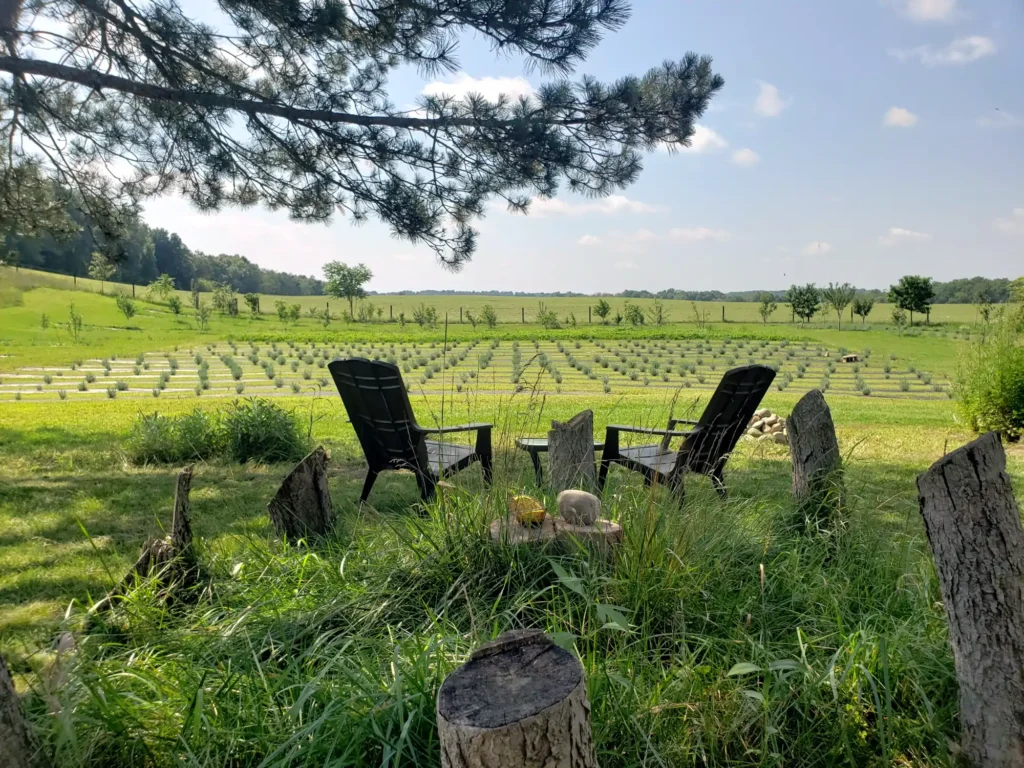Your cart is currently empty!
Common Practices in Ecotherapy and Their Benefits to Wellness
Ecotherapy, also known as nature therapy, refers to a broad range of therapeutic practices that leverage the healing power of nature to improve emotional, mental, and physical health. This approach to wellness recognizes that the natural environment plays a significant role in human well-being and that reconnecting with nature can foster profound healing. Common practices within ecotherapy include activities like nature walks, gardening, animal-assisted therapy, forest bathing, wilderness therapy, traditional talk therapy integrated with nature, and contemplative practices such as mindfulness and meditation. Each of these practices has been shown to offer a variety of benefits, promoting balance, reducing stress, enhancing emotional resilience, and improving physical health.
1. Nature Walks and Hiking
One of the most straightforward and effective forms of ecotherapy is simply spending time in nature. Nature walks and hiking involve walking through parks, forests, beaches, or other natural landscapes, offering a chance to slow down and experience the present moment. Engaging with nature in this way has been proven to have significant psychological benefits. Research has demonstrated that spending time outdoors can lower cortisol levels (the stress hormone), reduce symptoms of anxiety and depression, and improve mood.
Hiking in natural environments, especially in quiet and serene settings, can help individuals gain clarity and a sense of peace. Nature provides a calming backdrop for introspection, and the physical activity involved can also trigger the release of endorphins, which boost mood and improve overall physical health. Additionally, walking in nature encourages mindfulness, allowing individuals to focus on the sights, sounds, and smells of the environment, promoting a sense of grounding and presence.
2. Gardening and Horticultural Therapy
Gardening is a practice that connects individuals with the earth in a highly tactile and grounding way. Horticultural therapy, which involves working with plants and the natural world to promote health, has become a popular form of ecotherapy. This practice may involve planting flowers, vegetables, or herbs, or simply spending time caring for existing plants.
The benefits of horticultural therapy are vast. On a psychological level, gardening encourages mindfulness and reduces anxiety, as the act of caring for plants requires focus and patience. It also fosters a sense of accomplishment when individuals see the fruits of their labor, which can improve self-esteem and emotional well-being. The act of nurturing life—whether it’s a garden or houseplants—can help individuals feel more connected to nature and offer a sense of control and purpose. Socially, gardening can be a communal activity, providing opportunities for bonding and connection with others. Furthermore, exposure to sunlight while gardening boosts vitamin D levels, contributing to better physical health and an overall positive mood.
3. Animal-Assisted Therapy
Animal-assisted therapy is another form of ecotherapy that utilizes the calming and emotional support that animals provide. While animals can be a source of comfort and companionship in everyday life, they are also used in structured therapeutic settings to assist individuals in overcoming emotional and psychological challenges.
Dogs, horses, and other animals are often used in therapy to help people develop trust, empathy, and emotional regulation. For example, equine therapy (working with horses) is particularly effective for building emotional resilience and enhancing social skills. Horses are sensitive creatures that mirror human emotions, helping participants learn how to regulate their behavior and emotions through interaction with the animals. Additionally, the unconditional nature of animals provides a safe space for individuals to process trauma, anxiety, or grief without judgment. Interacting with animals has been shown to reduce feelings of loneliness, lower blood pressure, and decrease stress hormones.
4. Forest Bathing (Shinrin-Yoku)
Originating in Japan, forest bathing, or shinrin-yoku, involves immersing oneself in a forest or wooded area and engaging fully with the natural environment through all the senses. The practice encourages individuals to slow down and absorb the sights, sounds, smells, and textures of the forest, promoting deep relaxation and mindfulness.
Forest bathing has been found to significantly reduce stress, lower blood pressure, and enhance immune function. Studies suggest that time spent in nature—especially in forests—can improve mental clarity, boost mood, and foster a sense of connection with the natural world. Forests have an inherent calming quality that induces a meditative state, which is why forest bathing is so effective at reducing anxiety and fostering well-being. Furthermore, engaging with nature in this way has been shown to improve cognitive function, enhance creativity, and restore mental focus, making it an excellent remedy for burnout or mental fatigue.
5. Wilderness Therapy
Wilderness therapy involves using remote or rugged natural environments to help individuals confront personal challenges, improve emotional health, and develop life skills. Often used for adolescents and young adults struggling with behavioral issues, addiction, or emotional trauma, wilderness therapy is an intensive form of ecotherapy that combines physical challenges with psychological counseling.
By participating in activities such as hiking, camping, and rock climbing, individuals in wilderness therapy programs are encouraged to step outside of their comfort zones, learn self-reliance, and process emotions in a supportive setting. The challenging conditions of the wilderness allow participants to confront their fears, build resilience, and develop a deeper sense of self-awareness. Wilderness therapy is also effective in fostering group cohesion, as it often involves collaborative tasks that require teamwork and communication. The combination of physical exertion, emotional work, and connection with nature provides a powerful opportunity for healing and personal growth.
6. Traditional Talk Therapy and Contemplative Practices in Nature
Many people are familiar with traditional talk therapy, which involves speaking with a trained therapist to process emotions, work through trauma, and improve mental health. In the context of ecotherapy, traditional talk therapy can be enhanced by taking place outdoors or in nature-based settings. Combining the reflective aspects of therapy with the calming influence of nature creates a powerful space for healing. Nature can act as a catalyst for self-reflection, providing a soothing backdrop for conversations about personal struggles, goals, and healing.
Contemplative practices like meditation and mindfulness are often incorporated into ecotherapy as well. Practicing mindfulness outdoors, whether through walking meditation, breathing exercises, or simply being present in nature, can deepen one’s sense of peace and connection to the environment. These practices have been shown to reduce anxiety, improve emotional regulation, and enhance overall well-being.
Practicing Ecotherapy on Your Own and the Role of a Guide
While many of the ecotherapy practices outlined above can be done independently, there is a significant benefit to working with a trained guide. Nature walks, gardening, and meditation can be practiced solo, but a guide—whether a trained therapist, ecotherapist, or wilderness guide—can offer invaluable support, especially when deeper emotional or psychological issues are involved. A guide can help create a safe and supportive environment, offering insight, structure, and tools for processing emotions in a meaningful way.
Moreover, a guide can help individuals deepen their connection to nature and use the experience in therapeutic ways, tailoring practices to individual needs and facilitating a more profound healing journey. While it is possible to engage with nature on one’s own, having the guidance of a professional can enrich the experience, especially for those who are new to ecotherapy or navigating significant personal challenges.

